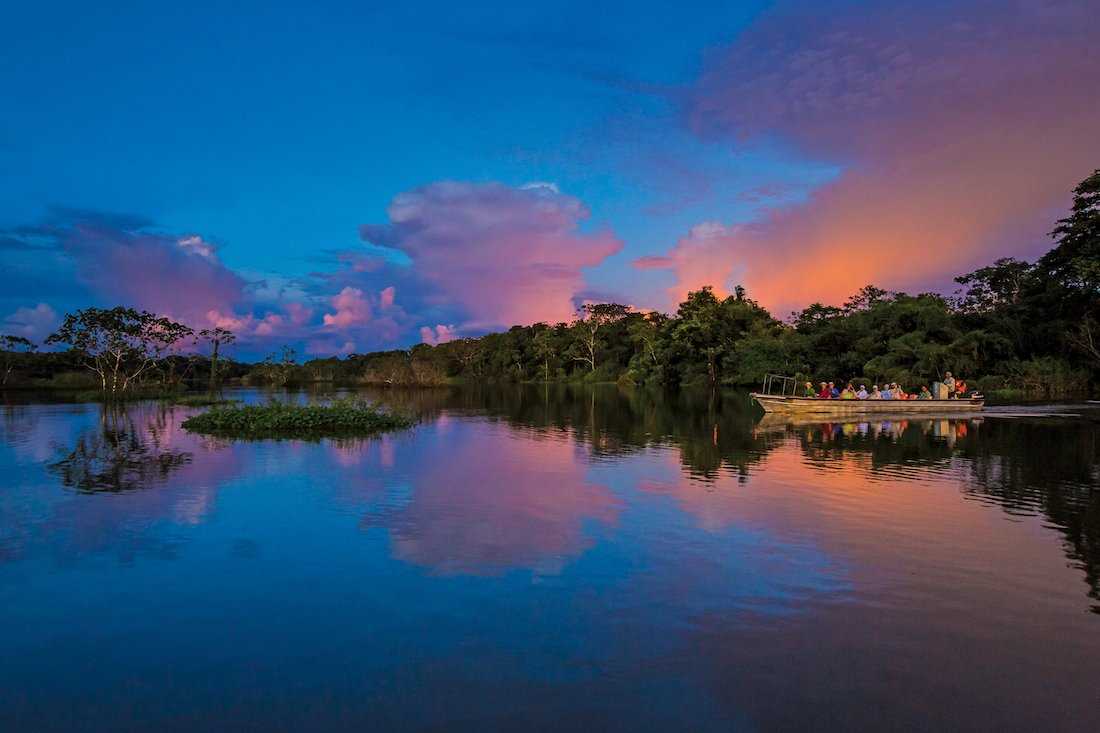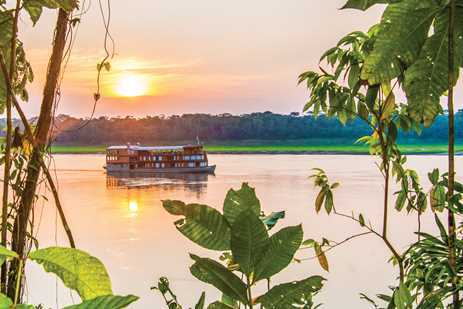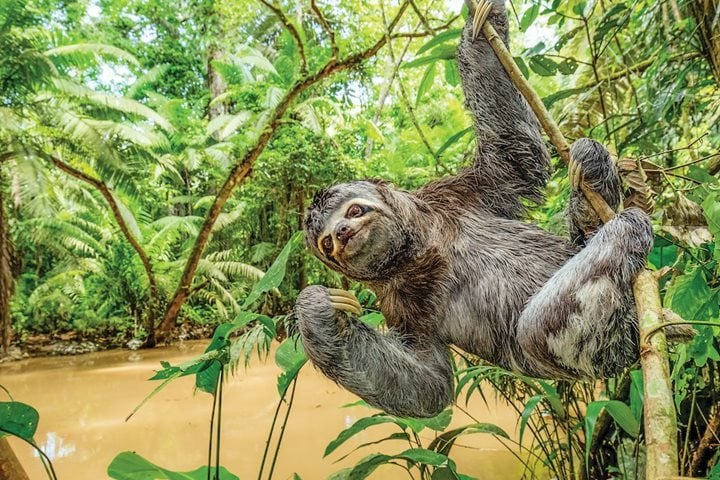When is the Best Time to Travel to the Amazon?
In the Amazon, temperatures and humidity remain fairly consistent year-round. What changes dramatically is the amount of rainfall—and the height of the river. This region of Peru receives an average of 12 feet of rain annually, spread over roughly 200 days, keeping the rainforest lush and teeming with life. Fortunately, even frequent showers rarely interfere with exploration.
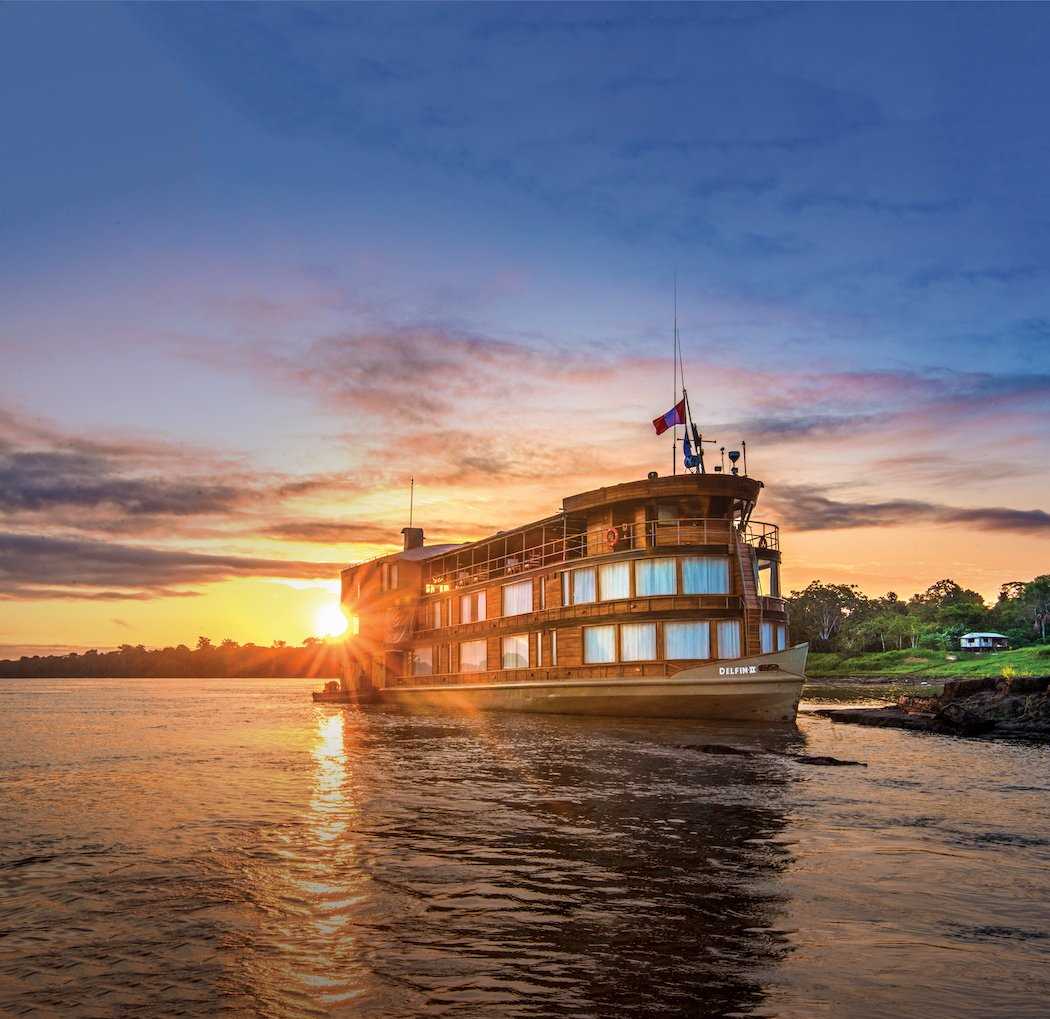
The year divides neatly into two seasons: high water (December–May) and low water (June–November). Wildlife sightings are excellent in both, but each offers a distinct experience. During the high-water season, rainfall and snowmelt from the Andes cause rivers to swell and flood the forest. When the water is low, the river recedes to reveal more jungle trails.
Our flexible itineraries and expert expedition teams are designed to make the most of every condition. No matter when you go, we adapt to the rhythms of this ever-changing ecosystem—using local knowledge to maximize wildlife encounters and ensure a remarkable journey through the heart of the Amazon.
High Water Season (December to May)
In high-water season, daytime temperatures average around 86°F, dipping to 60–75°F at night. Meltwater from the Andes and abundant rainfall combine to flood the forest floor, raising water levels by more than 30 feet in some areas. The result is a vast aquatic landscape—one of the largest roadless regions on Earth—where every creek and inlet becomes navigable.
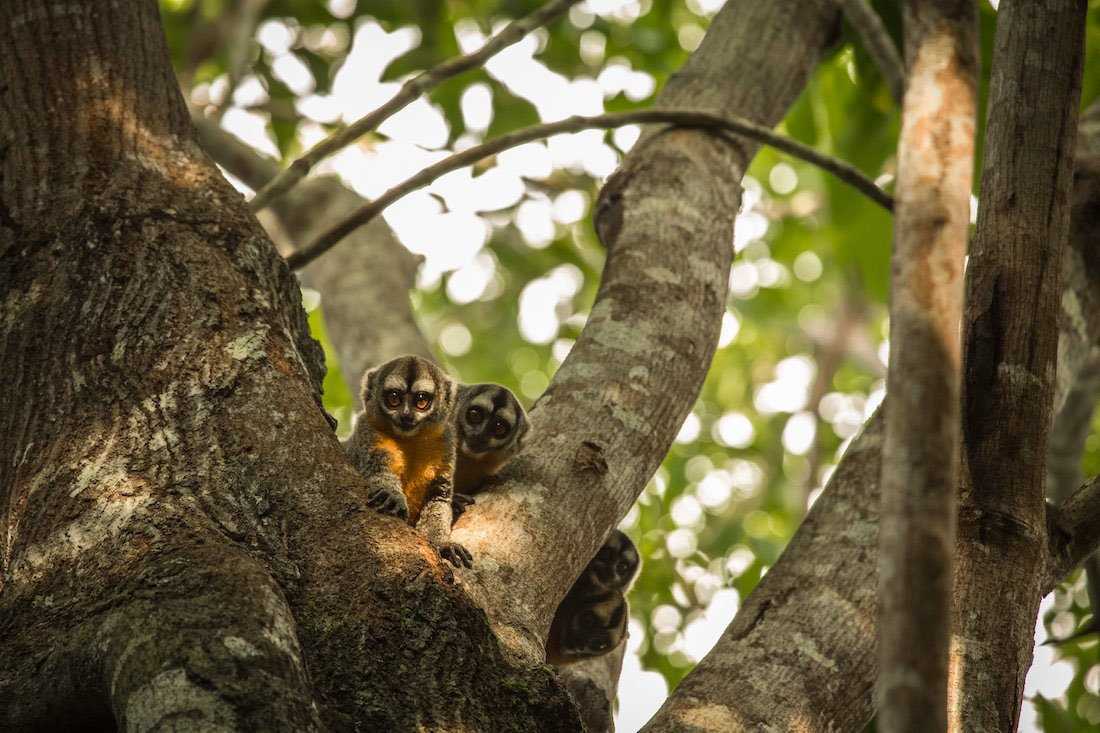
Traveling by skiff or kayak, you can glide deep into the flooded forest, entering waterways that shift and reshape with each passing season. Trees bloom and fruit during this time, drawing monkeys, birds and other animals to feed. Because the canopy sits closer to the water, you can often spot wildlife at eye level—sloths, squirrel monkeys, macaws and more.
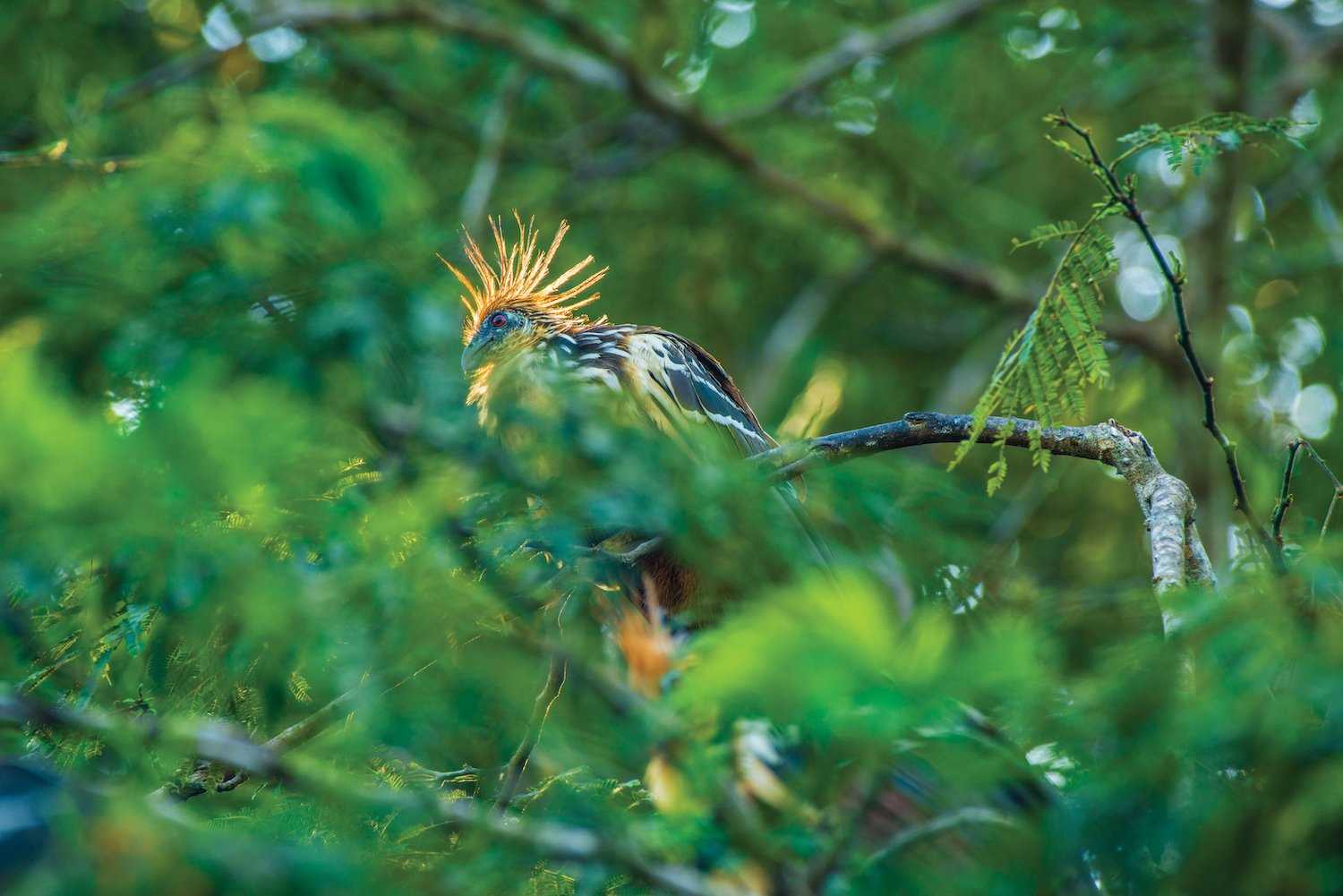
The nutrient-rich floodwaters reflect the dense greenery above, earning the Amazon its nickname, the “Mirrored Forest” or “Jungle of Mirrors.” While terrestrial animals move to higher ground during this season, aquatic species thrive. Fish, manatees and turtles flourish in the expanded habitat, though predators like river dolphins and giant otters can be harder to find as their hunting grounds widen.
Low Water Season (Late June to November)
As rainfall lessens and Andean snowmelt slows, river levels drop dramatically, revealing sandy banks and forest trails. The low-water season is typically five degrees warmer than the high-water months and offers greater opportunities to hike and explore on foot.
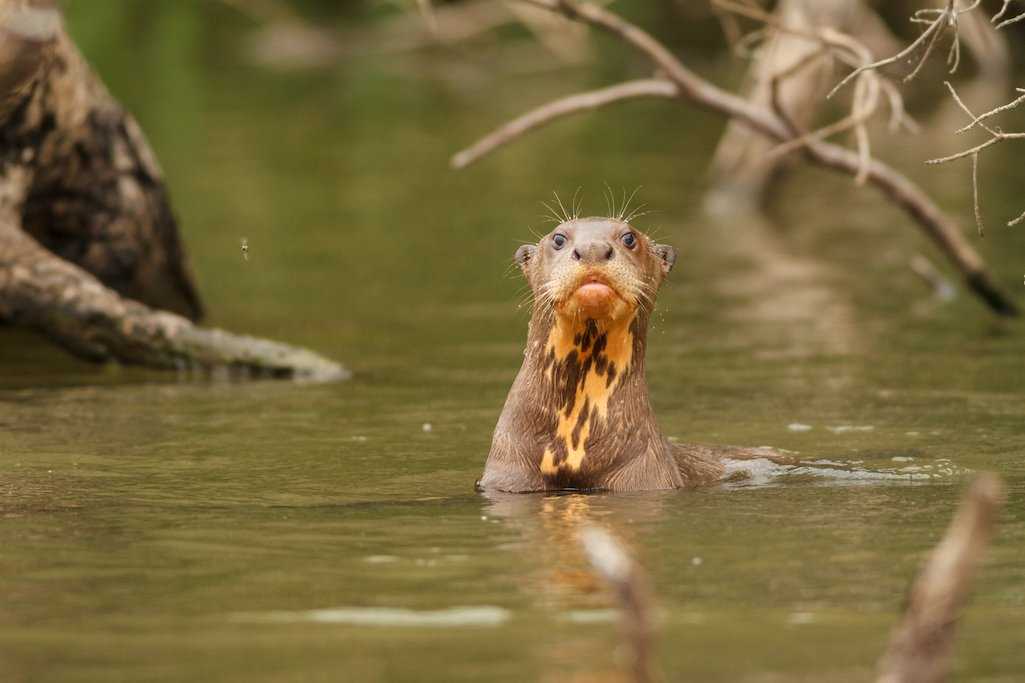
With fewer waterways, fish concentrate in the main rivers—drawing in predators such as dolphins, caimans and giant otters. You’re also more likely to see manatees, anacondas, arapaima and wading birds like the Jabiru stork, which hunt along the exposed riverbanks and lagoons. Migratory birds join the reserve’s more than 500 resident species, including scarlet macaws and hoatzins.
This is also when terrestrial wildlife becomes more visible. As new trails emerge from receding waters, forest dwellers like tapirs and peccaries can often be seen, along with aquatic turtles nesting on the sun-warmed beaches. Local communities take advantage of the drier conditions to plant crops such as rice and beans.
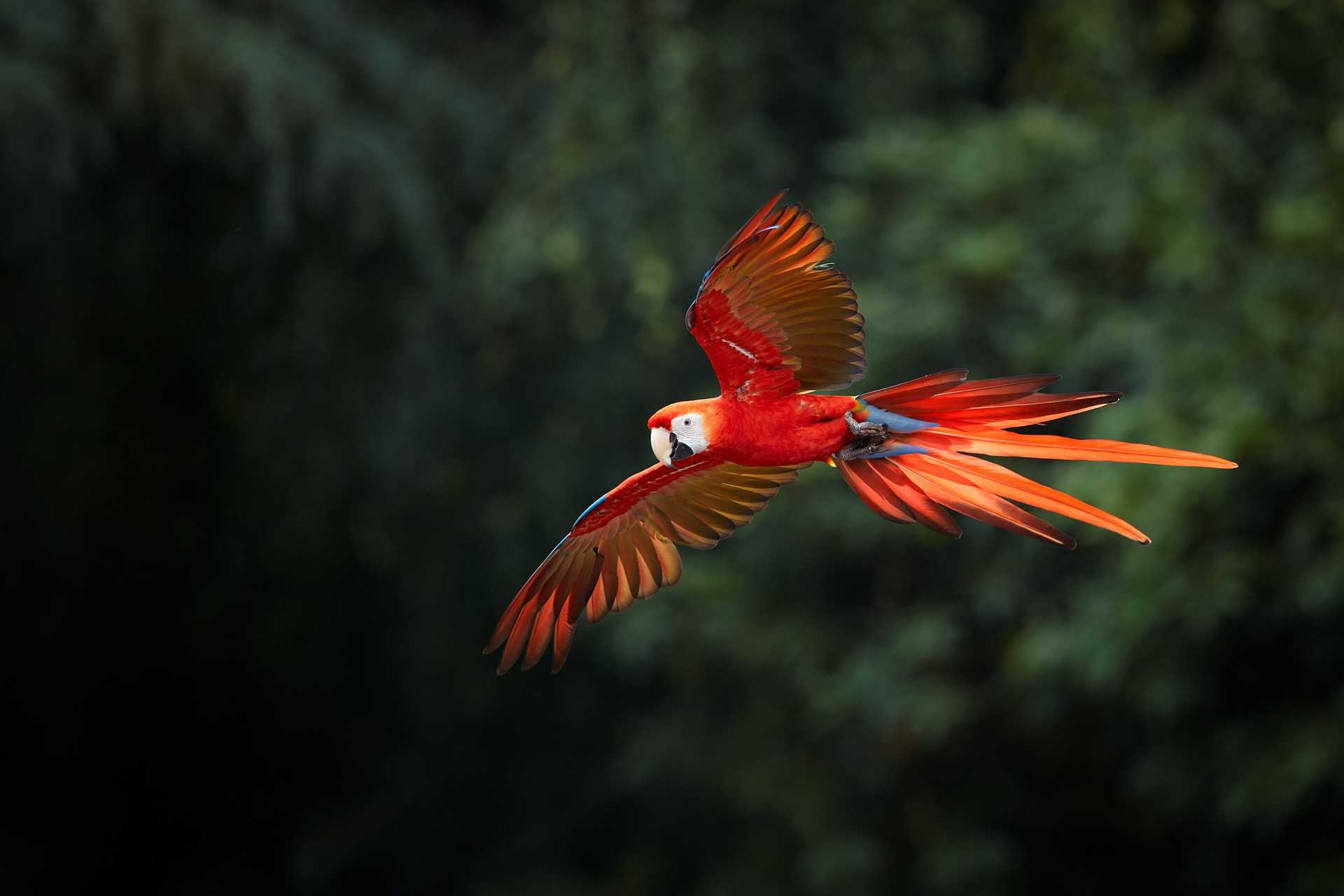
As one of our naturalists and photo instructors, Aaron Raymond, recalls: “On the way back to the ship we stopped at a small island and had a moment of silence to enjoy the sound of tens of thousands of canary-winged parakeets flying across the water to roost.”
A Year-Round Paradise
There’s no wrong time to explore the Amazon. Whether you’re gliding through flooded forests or hiking beneath a canopy alive with birdsong, each season offers a unique perspective on one of Earth’s most extraordinary ecosystems. Whichever you choose, you’ll share this vibrant wilderness with some of the planet’s most spectacular creatures—and return with stories only the Amazon can tell.

